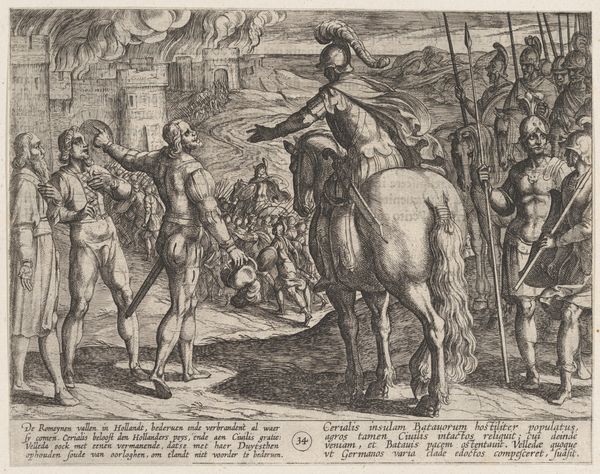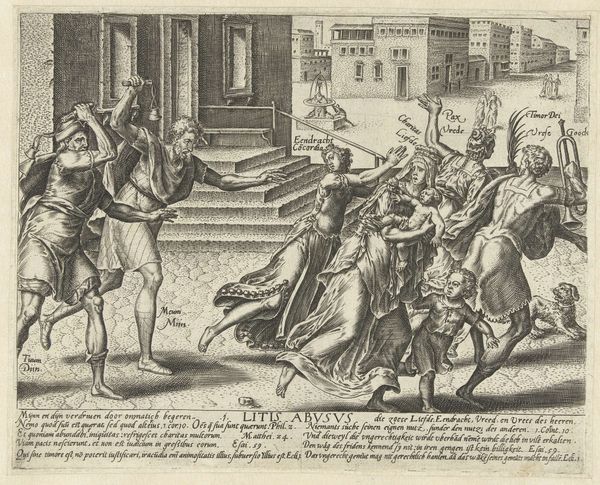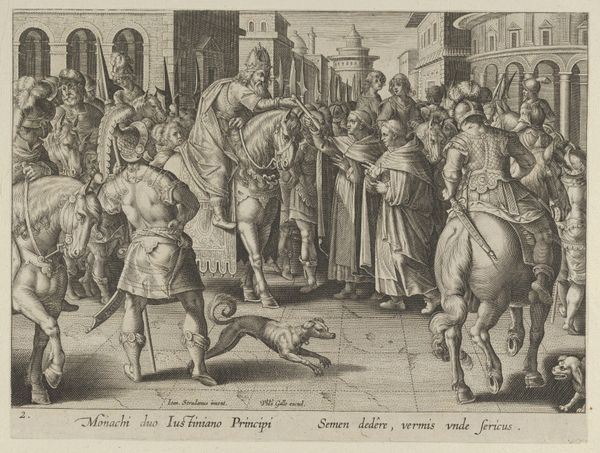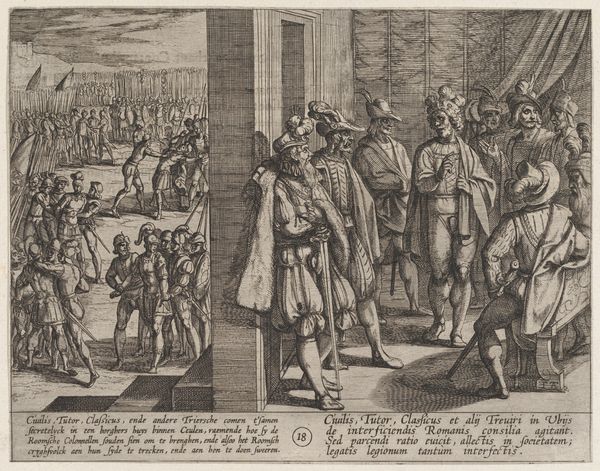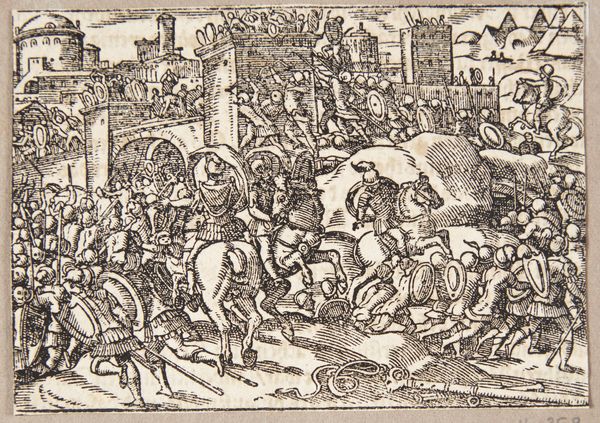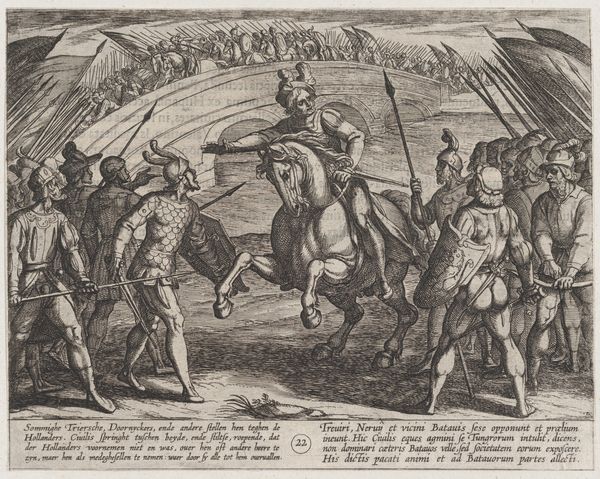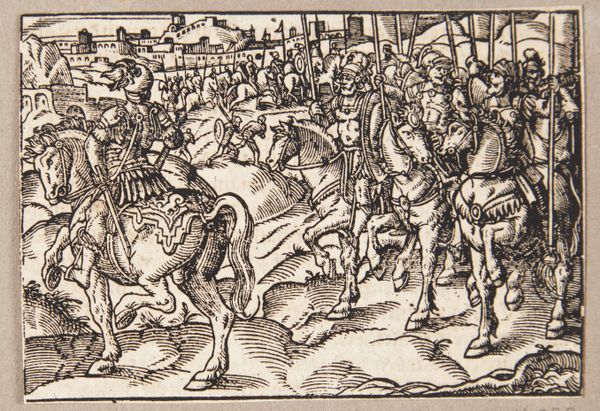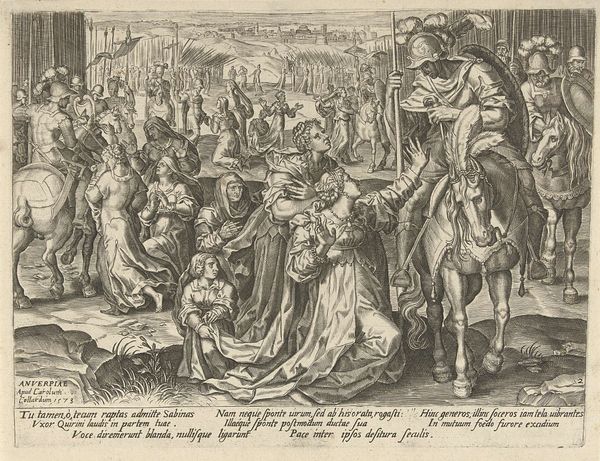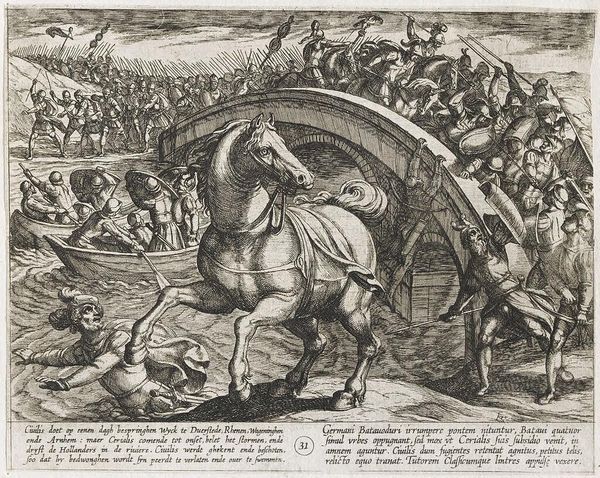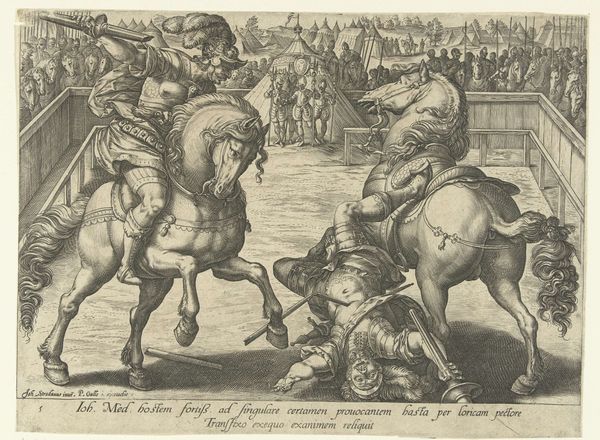
print, intaglio, engraving
#
narrative-art
# print
#
intaglio
#
classical-realism
#
mannerism
#
figuration
#
11_renaissance
#
history-painting
#
italian-renaissance
#
engraving
Dimensions: height 225 mm, width 295 mm
Copyright: Rijks Museum: Open Domain
Curator: This engraving, crafted by Pieter Jalhea Furnius in 1573, depicts Romulus and Hersilia on a Triumphal Chariot. It's part of the Rijksmuseum's collection. What are your immediate impressions? Editor: The first thing that strikes me is the density of the composition, a swirling mass of figures rendered in exquisite detail through the intricate linework. It’s quite busy, isn't it? Almost overwhelming. Curator: The density certainly reflects the social and political context. Depicting Romulus, the founder of Rome, with Hersilia underscores themes of power, conquest, and perhaps even the negotiations necessary to maintain a social order built on, shall we say, ‘contested’ foundations. The Sabine women’s abduction is implicit here. Editor: Yes, one can sense the drama inherent in the historical narrative. From a formal perspective, note the Mannerist influence, seen in the elongated figures and the somewhat exaggerated poses. The artist uses complex layering and a high degree of detail to create a sense of depth, despite the relatively flat picture plane. Curator: Indeed, those "elongated figures" speak volumes about the era’s ideals—perhaps even glorifying an act of violence central to the construction of Rome, reinterpreting it, framing it. What’s fascinating to me is the intersection of myth, history, and politics represented here, all framed within the social lens of the Renaissance. We cannot separate these stories of ‘greatness’ from the often-silenced narratives of the marginalized, the conquered, the women. Editor: Precisely, there's a deliberate artifice to the whole scene. The attention to the musculature of the figures, the folds in the drapery, and the texture of the horses’ manes all contribute to a heightened sense of drama, pulling the viewer into the narrative while also reminding us of its constructed nature. Curator: I agree entirely; the work serves as a potent reminder of how dominant narratives can both reflect and reinforce social norms, even retroactively justifying questionable origins of power and control through the lens of what is being depicted. Editor: Ultimately, the enduring power of the engraving comes from its mastery of visual language, drawing the viewer in with the promise of spectacle while prompting deeper questions about history, representation, and the values embedded within. Curator: A visual language deeply rooted in specific social, political and, crucially, gendered constructs of its time. A powerful and disturbing demonstration, visually compelling but historically problematic.
Comments
No comments
Be the first to comment and join the conversation on the ultimate creative platform.
